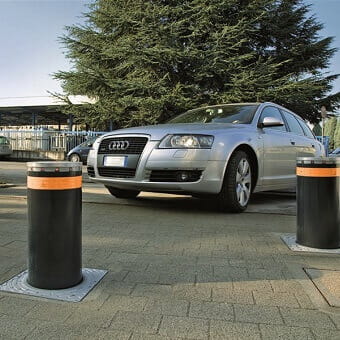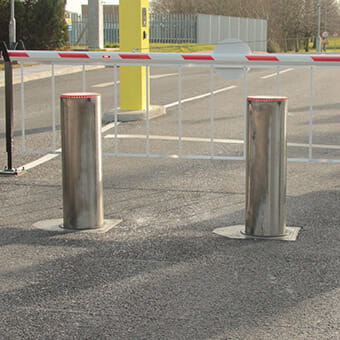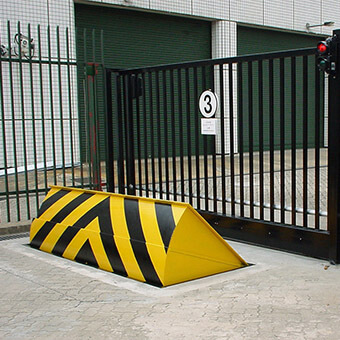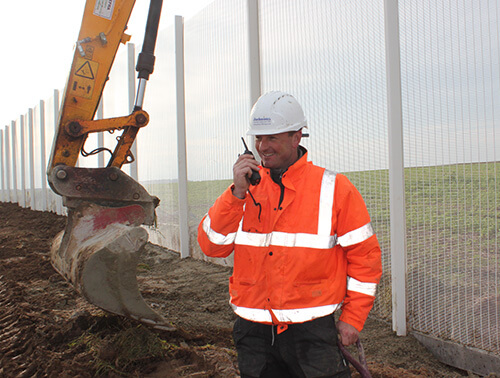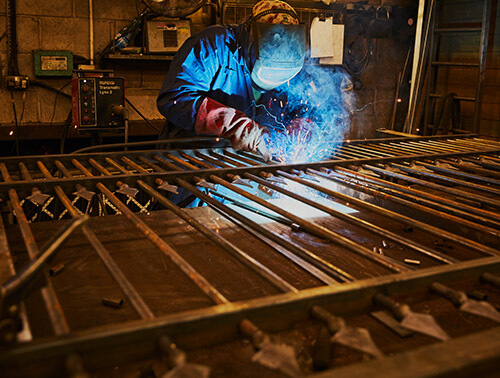Our other sites:
Every day, speeding, pedal error, driver impairment, visual misjudgement and drink driving lead to serious accidents – on and off-road. Pedestrian fatalities in the UK have been increasing since 2010, amounting to a quarter of all road deaths. The need for well-designed security bollards in carefully considered locations has never been greater, especially when the rise of terrorism-related vehicle attacks is taken into account too.
Specifying security bollards around commercial properties, public spaces and high-risk sites requires a thorough understanding of the various threats out there and the different types of bollards that mitigate them.
The Need for Vehicle Security Barriers
When a site has vehicle access or is located close to road traffic, it is important to evaluate the surrounding environment to understand the risks to the buildings, their occupants and people within the local vicinity of the site.
How close vehicles get to the building needs to be considered as does traffic frequency, since greater vehicle activity increases the likelihood of an accident. Thought must also be given to the speed of traffic in the area including the way the traffic flows around the site, and finally, the type of vehicles present.
While specifiers should think carefully about protecting buildings and pedestrians against drivers losing control of their vehicles and road traffic accidents, the rise of deliberate vehicle-borne attacks means that it is not just high security sites which are at risk of attack. Fatal incidents at Westminster, London Bridge and Finsbury Park have reinforced the need for Vehicle Security Barriers (VSBs) installed in all kinds of crowded spaces, not just key sites such as train stations, airports and other key infrastructure with high footfall.
Crash rated bollards are highly effective in Hostile Vehicle Mitigation (HVM), preventing vehicles from being used as weapons. Pedestrian movement is key; designers should take a holistic approach when installing bollards to ensure an appropriate level of physical protection is provided with minimal impact on pedestrian flow.
Addressing Site Vulnerabilities
A threat and risk assessment of your site should be carried out by security experts, assessing its strengths, vulnerabilities and risks. The purpose of such an assessment is not to create a ‘fortress mentality’, but to determine how well protected people (staff, visitors, customers) and physical assets (building, contents, equipment) are.
Certain features, such as large shopfront windows and wide entrances, can be especially vulnerable to oncoming traffic if left unprotected. Building corners and other external structures like benches and storage areas are often overlooked, though stand a greater chance of vehicular impact due to their exposed position.
Consider not only whether your site could be a potential terrorist target but also if it’s adjacent to high-risk premises, such as government buildings and commercial centres. This opens up the possibility of collateral damage, such as an attack vehicle traversing your site, if exposed, to get to the target.
Once a site’s vulnerable areas have been identified and the need for a bollard array has been defined, the appropriate bollard design can be specified to create a controlled traffic setting that enhances pedestrian and building safety.
Types of Bollards and Applications
Security bollards can be generally split into two categories: crash-rated and non-crash rated.
Crash-rated bollards have been put through rigorous testing by government-approved bodies and given different ratings depending on their levels of resistance. In the UK, PAS 68 is the Publicly Available Specification for vehicle security barriers and is considered to be the security industry’s benchmark for HVM equipment.
PAS 68 identifies the impact test methods, tolerances, test-vehicle type and vehicle performance criteria that need to be met. Once a bollard has been tested by the BSI, a PAS 68 rating is given, expressed as a sequence of letters, symbols and numbers.
Non-crash rated bollards are not designed to be resistant to vehicle crashes; however, this does not mean they have no resistance – rather, their resistance power is untested. They are typically installed at low-risk sites or where security isn’t a main concern.
Unrated steel bollards and timber bollards are used for general demarcation in places like car parks, play areas, residential zones or sites that require traffic calming to reduce vehicle speed and improve safety for all. They can also be used as a deterrent to stop cars mounting pavements.
Security Bollards from Jacksons Fencing
At Jacksons Fencing we supply a range of security bollards to suit a variety of needs, providing protection against vehicular attacks and other threats to your site.
Our Beaufort Automatic Rising Bollards are an innovative access control solution, activated by any control system or signalling device. These high-end bollards are an easy-to-operate alternative to fixed posts and barriers with a standard descent time of just 2.8 seconds, making them suitable for sites with high vehicle flow.
For a perimeter-protection solution, our Lancaster Crash Rated Bollards are highly secure, unobtrusive and capable of defending against a hostile vehicle attack. These retractable hydraulic-operation bollards have been tested to PAS 68 standards.
Harrier Static Bollards are also PAS 68 rated and are ideal for high-risk sites such as data centres, power stations and transport locations, with the guaranteed resilience to halt heavy goods vehicles. They are manufactured using heavy gauge steel, which is fully hot-dip galvanised to provide lasting protection to your building, the people accessing the site, and the pedestrians who pass by.
Related products
Jacksons Security has a range of products relating to this article, all complete with our 25 year service life guarantee. If you cannot find the item you are looking for, please do not hesitate to call our friendly sales team.
Related Content
Top
